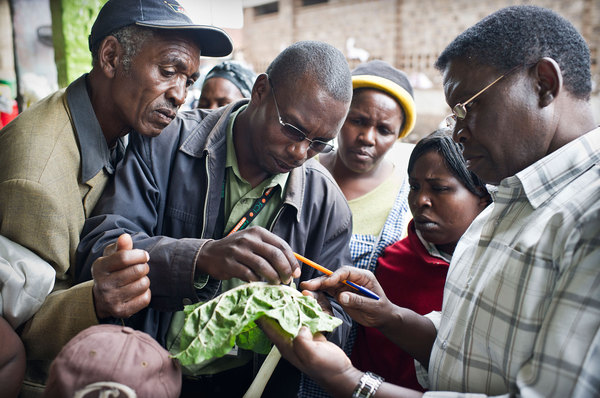Plantwise Photo Of The Month- April
To read more about the work Plantwise is doing in Bolivia follow this link. To read Spanish factsheets specific to Bolivia on the Plantwise Knowledge Bank click here.
Plantwise launches in Ghana
Plantwise, a global initiative run by CABI, was launched in Accra, Ghana last week. The initiative involves establishing plant clinics, which farmers can attend to get advice on plant health from trained plant doctors. In addition to the knowledge they acquire through the training programmes, these plant doctors can make use of the Plantwise Knowledge…
Plant clinics in Uganda: First regional plant clinic awareness workshop held in Kabarole
This article is adapted from a post on the Rwenzori Information Centres Network blog. In a bid to create awareness about plant clinics in Uganda, Plantwise organized a one day sensitization workshop at Lesuiex Centre in Kabarole District about improving food security and the lives of smallholder farmers in Uganda. It was also aimed at…
Plantwise Photo Of The Month – February
To read more about plant clinics in Nepal and to watch a video of a plant clinic in action, click here. To find out more about plant pests and diseases in Nepal visit the Plantwise Pest Distribution map
Plantwise heads west (in Uganda)
The recent awareness raising exercise that took place in Fort Portal in the west of Uganda was a roaring success. The key to extending Plantwise in Uganda was to involve the Chief Administrative officers, District Agricultural officers and the NAADS coordinator of each of the districts. The extension service in Uganda is mostly decentralised with…
How mobile technology could improve agriculture
Technological innovation is becoming increasingly important in agricultural development and productivity. The use of mobile ICT (information and communication technology) in agriculture provides a more efficient and cost-effective method for sharing and exchanging knowledge more widely. Farmers are benefiting as they can access key information such as pest and disease reports, weather conditions and market prices.…
CABI scientists help to uncover new occurrences of plant diseases
In 2012, CABI scientists continued to contribute to the discovery of new occurrences of plant pests and diseases, via the Plantwise diagnostic service. CABI’s Plantwise initiative offers a free service for eligible clients in developing countries, providing disease identification support to plant clinics. Every year, the DFID-funded service receives more than 500 samples from 80…
Plantwise 2012 Highlights
As we move into the New Year and all that 2013 has to offer it seems like a good time to review some of the achievements of 2012 . Here are a few of the Plantwise highlights of 2012!
Success for plant clinics in China
Since the first Plant clinic in China opened its doors in 2012, Plantwise activities in the country have gone from strength to strength. With help from local partners and the Chinese Institute of Plant Protection (IPP-CAAS), CABI were able to set up 9 plant clinics in China in 2012 and trained 29 plant doctors to…

